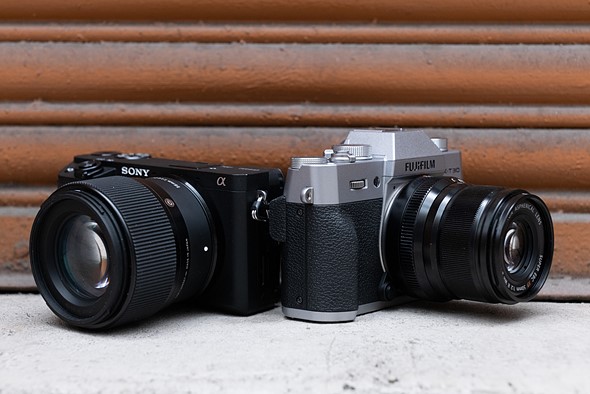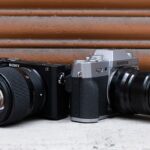
When I first heard of mirrorless cameras and their advantages over DSLRs, Sony became my reflexive choice. After all, who has not heard of their quality in all things electronic? But the biggest compelling reason is their reasonable price range, especially for the APS-C system.
I did not go for their APS-C models right away, as I had it with Canon before. I’ve read and heard a lot about how amateur photographers should upgrade to full-frame once they reach enthusiast level. Since I’m already in that category and have read so much about the wonders of mirrorless systems, I bought a Sony A7iii.
It was an exciting but rather overwhelming experience. I was amazed at the compactness of the A7iii, considering that it was full-frame and relatively affordable compared to similar systems such as those of Canon and Nikon. I loved its low-light capability and the ease with which it created images with creamy bokeh. Then I realized it was still too big and cumbersome for what I wanted, which was street photography.
So I shifted to the a7 series’ poorer cousins, the APS-C format a6000 series. I actually started with that famous grand-daddy, which was still being sold in Hong Kong camera shops despite its advanced age (it came out in February 2014) at a very attractive price point. It had a good balance of portability and capability, although decidedly inferior in features and hardware than the a7 series.
After a while, the limitations of its 7-year-old electronics began to make itself felt. Despite an 11-shot burst capability that was industry-leading at the time of its release, it had slow auto-focus particularly with moving subjects. So, when my finances improved, I upgraded to the newer 6400 with its much more advanced AI-based autofocus technology, skipping the other models in between. My keeper shots vastly improved along with my growing Sony-E lens collection.
As much as I loved the 6400, it was lacking one thing that I thought at that time was important to get good photos: In-Body Image Stabilization (IBIS). I felt I was not getting the most out of my unstabilized lenses, of which I had three. So I sold my 6400 and got myself a pre-owned 6500.
Now that I had the IBIS in my Sony, I was expecting a vast improvement in image quality. But I was sorely disappointed. Working from the wrong assumption that IBIS automatically makes for better shots, I was puzzled why my photos came out “just ok” but lacked that wow factor one often sees in pro shots. Worse, there was always that graininess that seemed to plague most, if not all, models in the a6000 series. Doing more research on the matter, I came to the conclusion the E-format lenses, the Sony color profile and the image processing capabilities of the dated sensor are all working to spoil my fun with Sony’s APS-C system.
In the end, I was forced to look outside of my Sony comfort zone and at other brands. Having read several reviews of Fujifilm mirrorless cameras and the “magical’ images they produce, I finally took the dive – despite a lingering fear of pricier Fujinon X lenses. I was spoiled by cheaper Sony E glass especially when bought second-hand, but by then I was already tired of choosing quantity over quality. I just wanted that much-vaunted Fujifilm magic into my photography at a still affordable price.
As luck would have it, the Fujifilm X-t30ii was on sale that time in one of the photography shops in Mongkok. My furious Googling about it produced very positive results: it has the same sensor and autofocus capabilities as the X-T4, but without the more premium model’s IBIS and astronomical price tag. Even better, it came bundled with the well-reviewed 18-55mm kit lens which is stabilized.
By then I was wiser about IBIS and why it’s not really a necessity, and so it’s lack in the X-T30ii was not a deal-breaker for me. There was a relatively easy workaround: use fast-aperture lenses and fast shutter settings for low light situations. Most if not all prime lenses for the XF mount are not stabilized, so an aperture speed of more than 2.8 is highly recommended if one wants tack-sharp photos in poor lighting.
Magic in Every Shot
The X-T30ii did not disappoint and performed superbly every time, getting better as one becomes more familiar with the quirks of Fujifilm’s T line of APS-C cameras. Coming from the convenience of Sony a6000 series’ PASM controls, I struggled at first to find the right combination of settings to get the most out of my new gear, but once I hit my stride it was pure photography bliss. [check out sample shots in my Flickr account]
One thing I really appreciate about the retro controls – a gaggle of dials that can be confusing at first – was that it gave me total control of my photo composition and added fun to the seemingly mundane act of taking pictures. It does not give me the odd feeling that some software programmer at Fujifilm should be taking greater credit or blame for my shots. When I push the shutter button and check the results later, I can confidently claim the image was all about my skill and judgement (or lack thereof). I felt greater connection with my camera than ever before.
And therein lies the magic of Fujifilm, that sense of deep satisfaction with a tool that allows itself to be controlled but also pushes the user to be better at handling it. PASM and auto settings are fine when you are in a multitasking situation and don’t want to fiddle around with dials, but then that is hardly serious photo-taking. The X-T30ii forced me to more involved in my photoshoots and not to use autosettings except when I needed to take shots for the sake of posterity or photo-documentation. At any rate, Fujifilm’s auto settings are often too slow and pedestrian in quality, coaxing the user to really master the manual settings to improve output.
It also helped that Fujifilm’s XF line of lenses are mostly excellent, including those made by third-party lensmakers like Viltrox and Samyang. The colors pop and have a dynamic range that grabs one’s attention. I thought before it was only so much hype, but when I saw my Fujifilm’s image output, I became a convert.
The Fujifilm X-T30ii’s aesthetics also wowed me with its retro vibe, looking every inch a classic camera. In comparison, the Sony a6000 series just looks blocky and functional, getting thicker with every new iteration that comes out. The viewfinder that pokes out from the left-hand side also does not help dispel its overall aura of strangeness.
Don’t get me wrong – the Sony a6000 series is a a very competent lineup of cameras that can deliver professional images in the right hands. It’s just that the Fujifilm X-T30ii, as well as its APS-C lineup, better in image quality, user experience and aesthetics. It has made me stop thinking of “levelling up” to a full-frame system, something that Sony’s APS-C cameras and lenses have failed to do in the three years that I spent with them. That’s no mean feat for an enthusiast-level photography gear.



